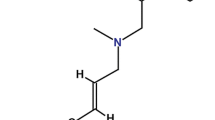Abstract
Anti-fungal agents are classified under two major headings, systematic and topical agents. Only systematic anti-fungal agents will be discussed in this chapter. Since the discovery in 1955, amphotericin B has been the cornerstone of anti-fungal treatment. It is active against most species of fungl. However,Candida lusitaniae, Pseudallescheria boydii, and fusarium spp have primary resistance to amphotericin B. Recently, new liposomal preparations of amphotericin B have been developed. They are less nephrotoxic. The azole family of anti-fungal includes two broad classes: the imidazoles (clotrimazote, ketoconazote, miconazole) and the triazoles (flucouazole and itracouazole). Imidazoles are still widely used for the treatment of superficial mycoses and vaginal candidiasis. The systematic triazoles are more slowly metabolized and have less effect on human synthesis than imidazoles, hence they are preferred for systemic therapy. Flucytosine is a fluorinated pyrimidine. Clinically, the principal use of flucytosine is as adjunctive therapy with amphotericin B in the treatment of candidial or cryptococcal diseases. Griseofuluin is derived from penicillium. It is fungistaticin vitro for species of dermatophytes. It is useful for the treatment of tinea capitis and tinea unginum.
Similar content being viewed by others
References
Stamos JK, Rowley AH. Candidemia in a Pediatric Population.Clin Infect Dis 1995; 20: 571–575.
Gold W, Stout NA, Pagano JF, Donovick R. Amphotericin A and B, Antifungal antibiotics produced by a streptomyces.In Vitro Studies.Antibiot Ann 1955–1956; 3: 579–586.
Gallis H, Drew R, Pickard W. Amphotericin B: 30 Years of Clinical Experience.Rev Infect Dis 1990; 12: 308–329.
Oldfield EC, Garst PD, Hostettler Cet al. Randomized, Double-blinded Trial of 1-versus-4 hour Amphotericin B Infusion Duration.Antimicrobial Agnets Chemother 1990; 34: 1402.
Gale EF. Nature and Development of Phenotypic Resistance to Amphotericin B in Candida Albicans.Adv Microb Physiol 1986; 27: 277–319.
DeMuri GP, Hostetter MK. Resistance to Antifungal Agents.Ped Clin of North America 1995; 42: 665–685.
Sugar AM. Use of Amphotericin B with Azole Antifungal Drugs: What Are We Doing?Antimicrob Agents Chemother 1995; 39: 1907.
Wright DG, Robichavd J, Pizzo PA, Deisseroth AB. Lethal Pulmonary Reactions Associated with the Combined Use of Amphotericin B and Leukocyte Transfusions.N Engl J Med 1981; 304: 1185.
Llanos A, Ciezo, Bernado Jet al. Effect of Salt Supplementation on Emphotericin B Nephrotoxicity.Kidney Int 1991; 40: 302.
Bennet JE. Antifungal Angets In Gilman AG, Rall TW, Nics AS, Taylor P, eds.The Pharmacological of Therapeutics. Maxwell, Macmillan Publishing Co. 1991; 1065–1073.
Como JA, Dismukes WE. Drug Therapy: Oral Azole Drugs as Systemic Antifungal Therapy.N Engl J Med 1994; 330: 263–272.
Saag MS, Dismukes WE. Azole Antifungal Agents: Emphasis on New Triazoles.Antimicrob Agents Chemother 1988; 32: 1–8.
Schmirt HJ, Edwards F, Andrade J, Niki Y, Armstrong D. Comparison of Azoles Against Aspergilliin vitro and in Experimental Model of Pulmonary Aspergillosis.Chemotherapy 1992; 38: 118–26.
Pfaller MA, Rinaldi MG. Antifungal Susceptibility Testing. Current State of Technology, Limitations and Standardization.Infect Dis Clin North Am 1993; 7: 435–444.
Lewis JH, Zimmerman HJ, Benson GD, Ishak KG. Hepatic Injury Associated with Ketoconazole Therapy: Analysis of 33 Cases.Gastroenterology 1984; 86: 503–513.
Crane JK, Shih HT. Syncope and Cardiac Arrhythmias Due to Interaction Between Itraconazole and Terfenadine.Am J Med 1993; 95: 445–446.
Dismukes WE. Azole Anti-fungal Drugs: Old and New.Annals of Intern Medicine 1988; 109: 177–179.
Tucker RM, Williams PL, Arathoon EGet al. Pharmacokinetics of Fluconazole in Cerebrospinal Fluid and Serum in Human Coccidioidal Meningitis.Antimicrob Agents Chemother 1988; 32: 369–373.
Lazar JD, Wilner KD. Drug Interactions with Fluconazole.Rev Infect Dis 1990; 12 (suppl 3): 5 327–333.
Agrawal PB, Narang A, and Kumar P. Fluconazole.Indian J Pediatr 1996; 63: 775–780.
Bozzett SA, Larsen RA, Chiv Jet al. A Placebocontrolled Trial of Maintenance Therapy with Fluconazole After Treatment of Cryptococcal Meningitis in the Acquired Immunodeficiency Syndrome.N Engl J Med 1991; 324: 580–584.
Hetherington SV. Orlicek S. Patric C. Antifungal Agents. In Long SS, Pickering LK, Prober CG, eds.Principles and Practice of Pediatric Infectious Diseases. New York, Churchill Livingstone, 1997.
Barone JA, Koh JG, Bierman RHet al. Food Interaction and Steady State Pharmacokinetics of Itraconazole Capsules in Healthy Male Volunteers.Antimicrob Agents Chemother 1993; 37: 778–784.
Sachs MK, Blanchard LM, Green PJ. Interaction of Itraconazole and Digoxin.Clin Infect Dis 1993; 16: 400–403.
Bikers DR. Antifungal Therapy: Potential Interactions with Other Classes of Drugs.J Am Acad Dermatol 1994; 31: 587–590.
Svarezs. New Antifungal Therapy for Children.Advances in Dermatology 1997; 12: 195–209.
Terrell C. Antifungal Agents, Part II, The Azoles.Mayo Clinic Proc 1999; 74: 78–100.
Polak A, Scholer HJ. Mode of Action of 5-Fluorocytosine and Mechanisms of Resistance.Chemotherapy 1975; 21: 113.
Speller D, Davies M. Sensitivity of Yeasts to 5-Fluorocytosis.J Med Microbiol 1973; 6: 315–321.
Francis P, Walsh T. Evolving Role of Flucytosine in Immunocompromised Patients: New Insights into Safety, Pharmacokinetics and Antifungal Therapy.Clin Infect Dis 1992; 15: 1003–1018.
Tanz RR, Hebert AA, Esterly NB. Treating Tinea Capitis: Should Ketoconazole Replace Griseofulvin?J Pediatr 1988; 112: 987–991.
Frieden L, Howard R. Tinea Capitis: Epidemiology, Diagnosis, Treatment and Control.J Am Acad Dermatol 1994; 31: 542–546.
Macro F. p faller MA, Messerset al.In vitro activities of voriconazole (UK-109, 496) and four other antifungal agents against 394 clinical isolates of canidida spp.Antimicrobial Agents Chemotherapy 1998; 42: 3242–3244.
Georgopadakon NH. Antifungals: mechanism of action and resistance, established and novel drugs.Gurr Opin Microbial 1998; 1: 547–557.
Author information
Authors and Affiliations
Corresponding author
Rights and permissions
About this article
Cite this article
Abuhammour, W., Habte-Gabr, E. Systemic antifungal agents. Indian J Pediatr 68, 655–668 (2001). https://doi.org/10.1007/BF02752281
Issue Date:
DOI: https://doi.org/10.1007/BF02752281




